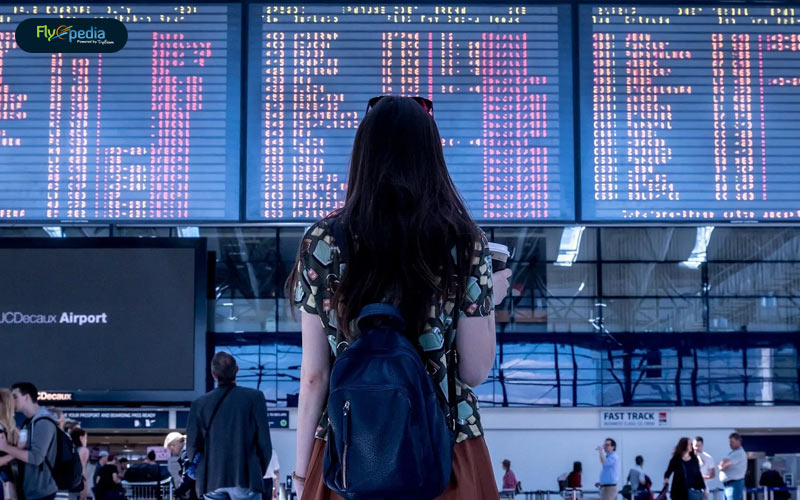Puzzled about fluctuating airfares – Here’s everything you need to know
Understanding airfares Fluctuations

You might be startled to learn that the airfares of a single seat on a single aircraft might vary many times before the airplane takes off.
Not only may airfares alter often during booking cheap international flight tickets, but they might even change within the day. Flight demand, flight availability, and external variables such as the COVID-19 virus, as well as geopolitics, can all influence these mid-day shifts. We’ll go through each one briefly.
Have you ever wondered about the science underlying airline price fluctuations? Flight rates might fluctuate. It’s possible that you spotted a wonderful deal on your favorite airline and decided to buy it, only to discover a few hours later that the rates have quadrupled or reduced. This may appear counter-intuitive since if you loved clothing at the mall, the price of that item is unlikely to rise or fall in a few hours. We’ve all been in this situation.
The following are some of the most important variables that influence flight costs.
1. Prices vary according to availability
It should come as no surprise that availability is essential to airline ticket prices. Airlines strive to maximize income from each flight and have decades of expertise in doing so. To put it simply, an airline will sell international cheap flight tickets for less on an empty aircraft and will want to charge much more when there are just a few seats available.
This is the primary reason why airfares fluctuate rapidly – frequently while you are still debating whether or not to purchase it. To handle this availability, airlines have traditionally employed a system called “booking classes.” These indicate different pricing levels within each cabin, and prices will normally climb when lower booking classes sell out.
There are differences between airlines. (And certainly with low-cost airlines). There are several commonalities between full-service airlines, such as Y for the full-fare economy and J for full-fare business class.
2. Purchasing advance passes
There are frequent discussions about whether it is preferable to buy seats early or late. In general, early orders are better value – though you must consider the limited and likely expensive change policies. Some of these were waived during COVID, but they are rapidly back.
Airlines frequently offer reduced airfares during best flight tickets deals for multiple-month advance orders – there can be significant savings here for long-haul business class travel.
Prices do not typically decrease very near departure. Although this may appear to be an effective way to occupy seats and create income, it would undermine pricing tactics if passengers simply delayed doing so. However, there are variations between airlines and itineraries. One prime illustration is leisure and work travel. Prices on some popular leisure or vacation itineraries may decrease closer to departure to draw passengers. Prices on common business paths or between important city pairs can skyrocket at the last minute.
3. Midweek and off-peak flights
Peak travel times will always have higher costs, due to both present seat availability and airlines establishing higher basic prices for popular dates. School vacations and bank holidays are clear examples, but keep in mind that prime times at your location can vary greatly. A holiday like Chinese New Year, for example, may not be as noticeable in Europe, but it typically has a significant effect on flights to Asia.
The day of the week is also important. Flights to India from USA are usually less expensive during the week than at the conclusion of the week or on the weekend. There are some exceptions, such as during peak travel periods and for short work travels, but this is a well-observed pattern. Tuesday through Thursday are typically cheaper.
The day of scheduling is also important. According to the flight booking website Skyscanner’s study of travel costs, fares are usually lowest when booked on a Tuesday – up to 15 to 25% lower. It is noted that carriers frequently debut new fares on Mondays, which affects pricing.
4. Stopovers and alternate routes
Another method to discover lower prices is to think about the path you’ll be taking. While this won’t help with a quick regional trip or travel with low-cost carriers, it will assist with lengthier routes.
One easy option is to add a stop. Direct trips are frequently more expensive. A straight trip from London to Hong Kong with British Airways, for example, may be more expensive than one with KLM that stops in Amsterdam. A stop will prolong the trip, but may reduce the cost, and many passengers prefer to split up the journey with fewer individual flights. Stops in the Middle East are an excellent example.
Conclusion
Airfares represent the supply-demand equilibrium. If airlines have done a good job of predicting travel demand for specific routes, ticket costs tend to increase as the date of departure approaches. Changing flight costs can be inconvenient, but by understanding how and when rates change, you can prepare more effectively. You can also watch and observe the costs of many booking services like Flyopedia. The best thing passengers can do is evaluate how popular their path will be on their trip date, check fares frequently to familiarize themselves with normal costs, and book when they see a fair fare.
Also read: Book Summer Flights Now To Unlock Exclusive Summer Deals




